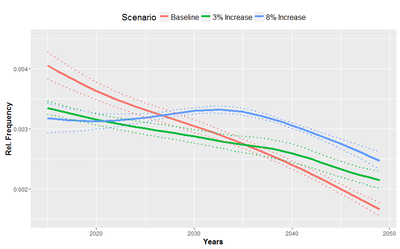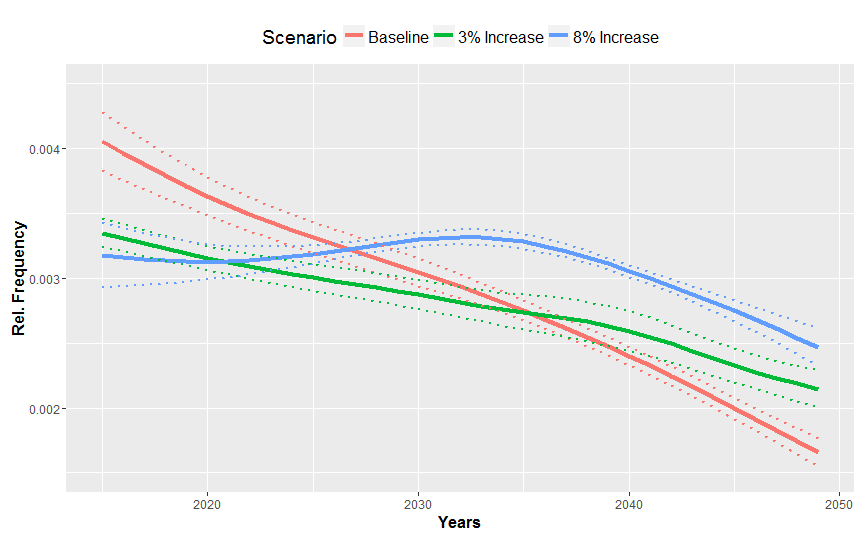Multistate modeling extended by behavioral rules (1.0.0)
We propose to extend demographic multistate models with a behavioural element linking intentions to behaviour. Concretely, behavioral rules explain intentions and thus transitions. Our framework is inspired by the Theory of Planned Behaviour. Model parameters are determined using empirical data if available. We exemplify our approach with a model of migration from Senegal to Southern Europe. Our approach adds to the toolkit of demographic projection by allowing for shocks and social influence which alter behaviour in nonlinear ways, while sticking to the general framework of multistate modelling.

Release Notes
Associated Publications
This release is out-of-date. The latest version is
1.6.0
Multistate modeling extended by behavioral rules 1.0.0
Submitted by
Sabine Zinn
Published Aug 03, 2016
Last modified Mar 13, 2018
We propose to extend demographic multistate models with a behavioural element linking intentions to behaviour. Concretely, behavioral rules explain intentions and thus transitions. Our framework is inspired by the Theory of Planned Behaviour. Model parameters are determined using empirical data if available. We exemplify our approach with a model of migration from Senegal to Southern Europe. Our approach adds to the toolkit of demographic projection by allowing for shocks and social influence which alter behaviour in nonlinear ways, while sticking to the general framework of multistate modelling.

